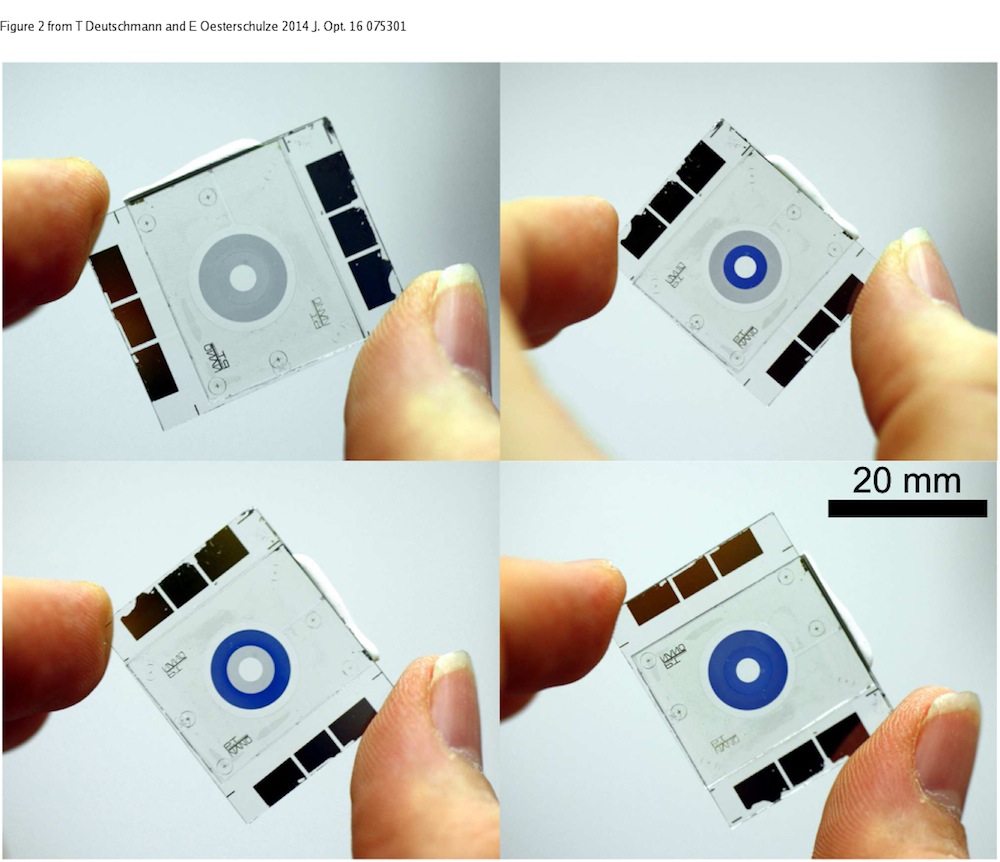'Smart Glass' Could Transform Smartphone Cameras

Newly developed "smart glass" technology that mimics the shutter capabilities of a traditional camera could improve the pictures you snap on your smartphone. Researchers in Germany have developed a camera component for smartphones that helps adjust light, exposure and focus.
Traditional cameras have what photographers refer to as an aperture — overlapping blades around the inside of a lens that move mechanically to change the size and focus of the lens. The aperture is sometimes referred to as an "iris." Much like the iris of the human eye, it controls how much light enters the mechanism, which affects the image that is eventually produced. When it comes to cameras, the amount of light that touches the camera's sensors affect the overall focus of the picture you take.
Because of their size, smartphone cameras currently don’t have aperture mechanisms. "There is no technology today that can realize an iris aperture for smartphone cameras," said Tobias Deutschmann, physicist at the Technische Universitaet Kaiserslautern in Germany and lead-author of the study. [9 Odd Ways Your Tech Devices May Injure You]
As a result, camera phone pictures won’t have the same quality or focus as pictures taken by a DSLR camera, for instance.
"The [smartphone] cameras would benefit from an iris, because it allows [the camera] to change the depth of focus, which is not possible right now, and would further close the gap in functionality between smartphone cameras and conventional digital cameras," Deutschmann told Live Science. "In addition it would be an option to create larger optics for the smartphones to increase the picture quality in bad light situations, like at night, while the iris would decrease the amount of light that reaches the sensor in bright environments."
Deutschmann and his colleagues developed a mechanism to make up for the need for better focus — a "micro-iris." The thin device, made of electrochromic material sometimes referred to as "smart glass," can be placed on the smartphone camera lens. Electrochromic material controls how much light passes through itself by changing its transparency in response to light or heat. Smart glass has been used in sunroofs, windows and skylights, and the material changes in opacity from transparent to translucent when heated or when voltage is applied to it.
In rearview mirrors, smart glass tints the mirror to reduce light glare. In architecture, smart glass is being employed in buildings as a way to cut energy costs, Green Tech Media reports.
Sign up for the Live Science daily newsletter now
Get the world’s most fascinating discoveries delivered straight to your inbox.
But in smartphone cameras, the smart glass in the micro-iris could function as an aperture — it can adjust how much light enters the camera, preventing too much exposure and helping to focus the image. The micro-iris is also incredibly low-powered, requiring only 1.5 volts of electricity, which means handheld smartphones are well-suited to handle it, the researchers said.
Deutschmann said the smart glass is still in its early stages of development, which means the idea works in principle but isn’t quite ready for commercial products just yet. Future research will look at how well electrochromic materials can control camera focus — an important parameter that will determine whether smart glass will be a key feature for next-generation smartphones.
The study was published June 19 in the Journal of Optics.
Follow Jillian Rose Lim @jillroselim & Google+. Follow us @livescience, Facebook & Google+. Original article on Live Science.









